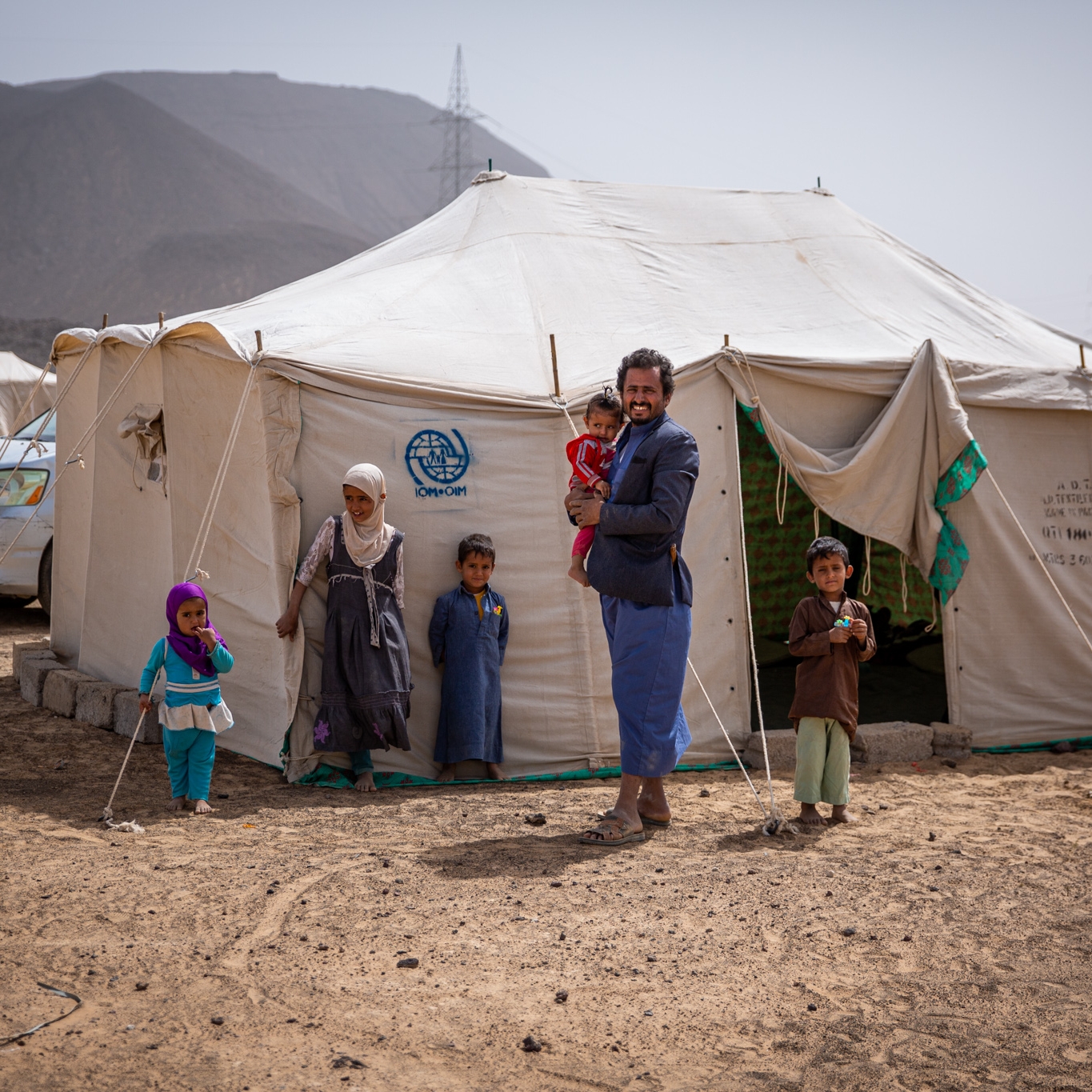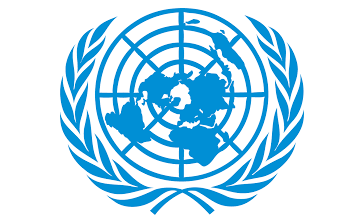IOM Vision
In 2021, IOM will address the acute and growing humanitarian emergency – currently the largest in the world – through the provision of frontline multi-sectoral humanitarian assistance in locations where the Organization has access and vulnerabilities are high. In addition, IOM’s priority is to also to expand programming that tackles the pre-existing drivers of fragility, as Yemen grapples with a deteriorating economy and weakened institutions and infrastructure. With this, IOM will enhance the resilience of individuals and communities through inclusive programming that aims to address multi-dimensional vulnerabilities, improve social cohesion, strengthen local institutions, sustain livelihoods and restore public infrastructure.
Objective
Saving lives and protecting people on the move
Direct beneficiaries: 2,550,650 displaced, crisis-affected persons, migrants, and host communities.
|
IOM will continue implementing CCCM activities in three governorates (Marib, Ibb and Taizz - north and south), including community mobilization and capacity-building; site care and maintenance; and coordination and service monitoring. As mentioned in the coordination section, IOM leads the CCCM subnational cluster in Marib and coordinates response activities. In 2021, IOM will continue to:
|
|
As the situation for migrants in Yemen continues to deteriorate, and exposure to protection risks rise within displaced and conflict-affected communities, IOM’s priority is to enhance the protection environment and referral pathways for the most vulnerable individuals, including those most at risk of harm and excluded from support systems. IOM’s protection activities are centred on improving living conditions for migrants, IDPs and conflict-affected communities in the country, through the delivery of lifesaving aid and protection assistance. To further achieve this, IOM will:
|
|
IOM will continue to provide safe, voluntary and dignified return solutions for stranded migrants and refugees in Yemen:
|
|
Working within United Nations frameworks and in coordination with the Ministry of Health and Population (MoPHP) and the World Health Organization (WHO), IOM is providing life-saving primary and secondary preventative and curative health-care services to IDPs, host communities and migrants, and integrating COVID-19 response efforts across its migration health programme.
|
|
IOM’s WASH programme in Yemen prioritizes immediate, scalable, and sustainable interventions aimed at reducing morbidity and mortality rates and providing equal and sustained access to safe and appropriate water and sanitation services in displaced, host, and migrant communities.
|
|
With the overall objective of providing safe, dignified and sustainable shelter solutions in IDP settlements, IOM is providing NFI kits, emergency shelter kits (ESK), shelter/collective centre upgrades and transitional shelter solutions to displaced people residing in IDP hosting sites and to host community members across the country. In particular:
|
IOM’s cash programme supports conflict-affected individuals through rapid cash-based interventions to improve the basic needs of IDPs, migrants and host communities in camps and urban settings. Cash-based interventions are closely integrated into various areas of IOM programming, such as CCCM, S-NFI, WASH, and protection. In 2021, IOM will:
- Expand multi-purpose cash assistance (MPCA) to cover over 96 districts across 6 governorates with the highest displacement (Al Hudaydah, Hajjah, Al Dhale’e, Taizz,Ibb and Marib), and continue its co-leadership of the rapid response mechanism cluster (together with the United Nations Populations Fund) and the Consortium of Yemen (CCY)

Objective
Driving solutions to displacement
Direct beneficiaries: 2,600,000 displaced, crisis-affected persons, migrants, and host communities.
|
While the outlook for Yemen may appear bleak, there are pockets of the country that are stabilising, and where agriculture and industry continue despite insecurity in surrounding areas. IOM’s priority is to safeguard these pockets of stability using community-based and social cohesion approaches:
|
|
In line with the minimum service package (MSP) guidelines for Yemen, a component of IOM’s migration health programme is centred on restoring Yemen’s weakened health system – rehabilitating and supporting operations in health facilities impacted by the conflict by providing medicine, medical equipment, human resources (incentive payments for medical staff):
|
|
IOM Yemen is expanding programming to strengthen national laboratory systems in southern governorates. Yemen’s insufficient testing and contact tracing capacities are evident in the low reporting of COVID-19 case numbers and high fatality rates. There are currently only six functional COVID-19 testing facilities across the country, and capacity is stretched: one laboratory in Aden carries out testing for four surrounding governorates; in governorates like Marib, which hosts the largest displaced population in Yemen, there is no testing capacity. To address these gaps, IOM will:
|
Objective
Contribute to an evidence-based and efficient crisis response system
Local authorities and humanitarian and development actors (national and international).
|
In Yemen, IOM’s Displacement Tracking Matrix functions through technical expertise at the central level, in terms of assessment and survey design, Database and Geographic Information Systems (GIS) as well as an expanding network of governorate-level focal points, enumerators and data entry clerks. Findings from IOM’s DTM assessments serve as operational baselines for humanitarian response activities targeting IDPs, returnees, and migrants. Where IOM has access, IOM disseminates multi-layered datasets and information on the mobility, locations (villages or neighbourhoods), vulnerabilities and needs of displaced populations, as well as needs of host, non-host communities, and other mobile populations to inform preparedness and response activities and build an evidence base for response and risk reduction interventions. IOM’s work in this area is framed under the following workstreams, under which COVID-19 related mobility and impact assessments are also integrated:
|
IOM was the first UN agency to establish dedicated presence in Marib in 2019, following assessments that demonstrated the widespread needs across the governorate. At the time, the governorate hosted the largest displaced population and displacement site in the country. Since then, humanitarian needs in the governorate have only increased and displacements into Marib have accounted for the majority of new displacements in 2020. With the growing needs, driven mainly by recent hostilities that have been centered in and around Marib and Al Jawf, IOM has sounded the alarm for humanitarian partners to increase their presence and support in Marib. As the lead UN organization in Marib, IOM has been committed to facilitating this by running a temporary humanitarian hub in Marib city. In 2021, IOM will contribute towards further improving access and service delivery in conflict affected Marib through the establishment and operation of a dedicated humanitarian hub. The humanitarian hub will provide office, security, telecommunication and accommodation services to humanitarian partners, thereby enabling the humanitarian response by providing partners with the facilities required to scale up their presence and activities in Marib. IOM’s priority is to run a cost-effective facility with the option to scale up as operational needs require. The facility will provide at least 120 office workspaces, and close to 40 accommodation spaces, as well as common services such as security and a clinic.
Yemen
The map used here is for illustration purposes only. Names and boundaries do not imply official endorsement or acceptance by IOM.
Figures are as of 31 December 2023. For more details of IOM's operational capacity in country, please see the IOM Capacity section.




















